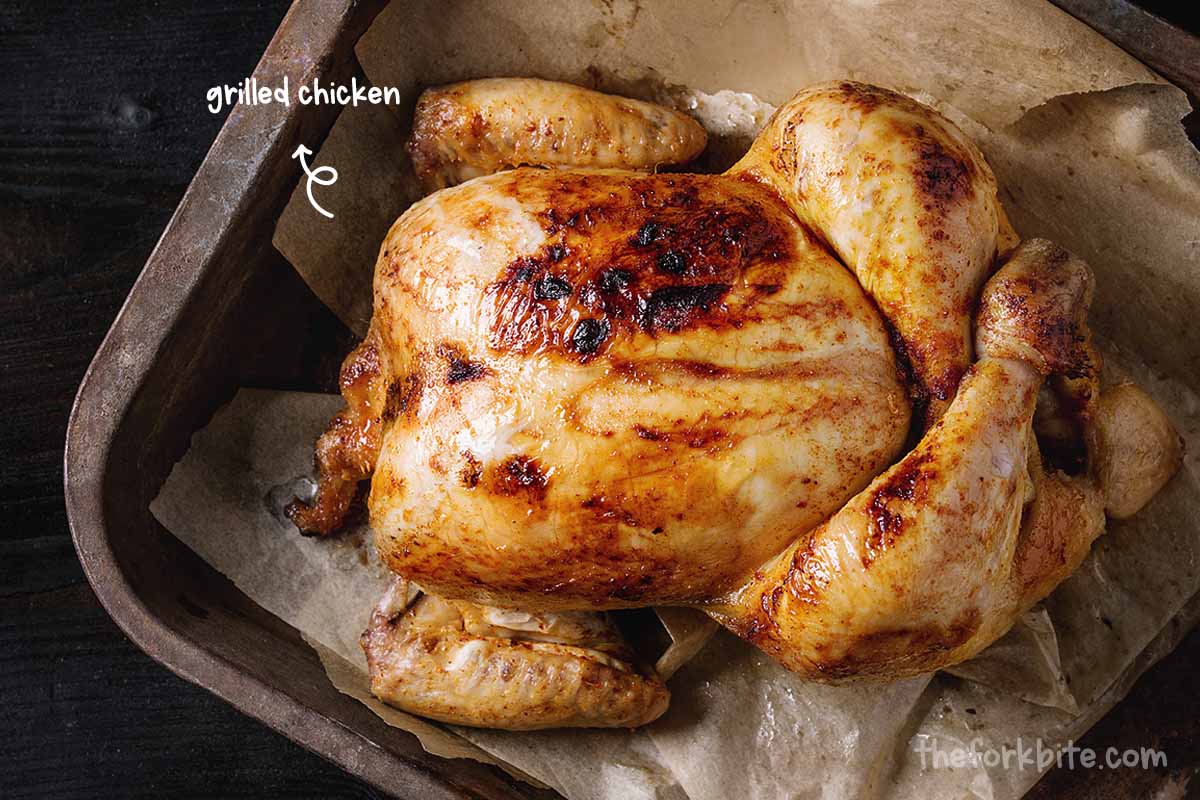

Here’s a great video that walks you through the process of trussing a chicken.Īs long as the rubbery texture is due to overcooking not undercooking, it’s safe to eat. If you’re cooking a whole chicken, you’ll want to truss the chicken legs to prevent them from burning or cooking faster than the rest of the chicken. Taking the meat off the heat too soon prevents the collagen breakdown which tenderizes the meat. Dark meat should be cooked to an internal temperature of 180☏. Undercooked chicken will be a dense and jiggly texture that looks shiny and rubbery in appearance.Īs mentioned above, white meat should be cooked to an internal temperature of 165☏. On the other end of the spectrum, undercooking the chicken is another reason chicken comes out rubbery. The chicken breasts will absorb enough moisture, making them less likely to become dry.ĭark meat will take longer as you’ll want to cook it to an internal temperature of at least 180☏, especially if you don’t want that reddish-pink meat near the bone. Regardless of how long it takes you to want to keep them on the grill until they reach an internal temperature of 165☏.Īnother way to prevent the white meat from becoming dry is to brine the breasts in a solution of 1/4 cup kosher salt dissolved in 4 cups of water for a minimum of 30 minutes before placing it on the grill. If you pounded the chicken breast before grilling it can take less. Chicken breasts, will take about 7-8 minutes on each side or more depending on the thickness of the breast. Unfortunately, it’s much easier to overcook white meat than dark meat.Īll chicken regardless of cut should be cooked over medium heat of at least 350☏ over indirect heat. White meat is lean meat and when overcooked it will become dry. Leaving the eat on the heat too long can suck the moisture out leaving you with a dry bird. When overcooked it will have a dense, hard, and stringy appeal. One of the most common causes of tough chicken is overcooking. Woody breast chicken is not dangerous to humans, but it makes for an unpleasant meal. This problem affects 5-10% of the chicken breasts on the market. While the cause is unknown, it’s suspected it’s caused by the synthetic hormones and antibiotics used to make the chickens grow as quickly and as large as possible. Woody breast is a muscle abnormality that causes hardened muscle fibers of broiler chickens, which lead to rubbery chicken. It has more connective tissue aka collagen that breaks down and moisturizes the meat at higher temperatures.
Overcooked chicken how to#
Check out my step-by-step tutorial on how to cook chicken breast on a Pit Boss pellet grill.ĭark meat is more forgiving and can be cooked to an internal temperature of 180☏-185☏ without becoming dry. It’s fine to pull it off the grill a little bit early, as the temperature will keep rising during the resting period. You’ll want to use a meat thermometer to check the fattest part of the meat before pulling it off. White meat is most tender when it is cooked to the FDA recommended temperature of 165☏, to avoid food-borne illnesses. Dark meat is fattier, lower in moisture, and comes largely from the legs and thighs of the bird. White meat comes from the breast of the bird, which is very lean and low in fat. So let’s dig in and figure out what causes the problem and how to fix it.īefore we dig into what causes this problem, let’s take a closer look at the two types of chicken meat. There’s a lot to know about cooking chicken on a pellet smoker, but if you follow these tips it’ll help ensure your next grilled chicken dish is tender and juicy. One of the advantages of cooking chicken on a pellet grill is you have more control over the temperature and the meat doesn’t dry out as much. In this article, we’ll be looking at ways to prevent it from becoming tough on a pellet grill. There are several ways to cook chicken from deep-frying, baking, grilling, smoking.

Without moisture, the protein fibers in the meat become elastic and tough. The short answer is it’s due to the quality of the meat (aka “woody breast), undercooking or overcooking the meat, which sucks the moisture right out leaving you with a rubbery dry, tire-like texture cut of poultry. This has you wondering “what makes chicken tough and chewy”, well let’s find out so it doesn’t happen again. You’ve followed the recipe to a “t” yet it’s rubbery and chewy. Nothing is more frustrating than realizing the chicken you’ve grilled is tough and chewy.


 0 kommentar(er)
0 kommentar(er)
